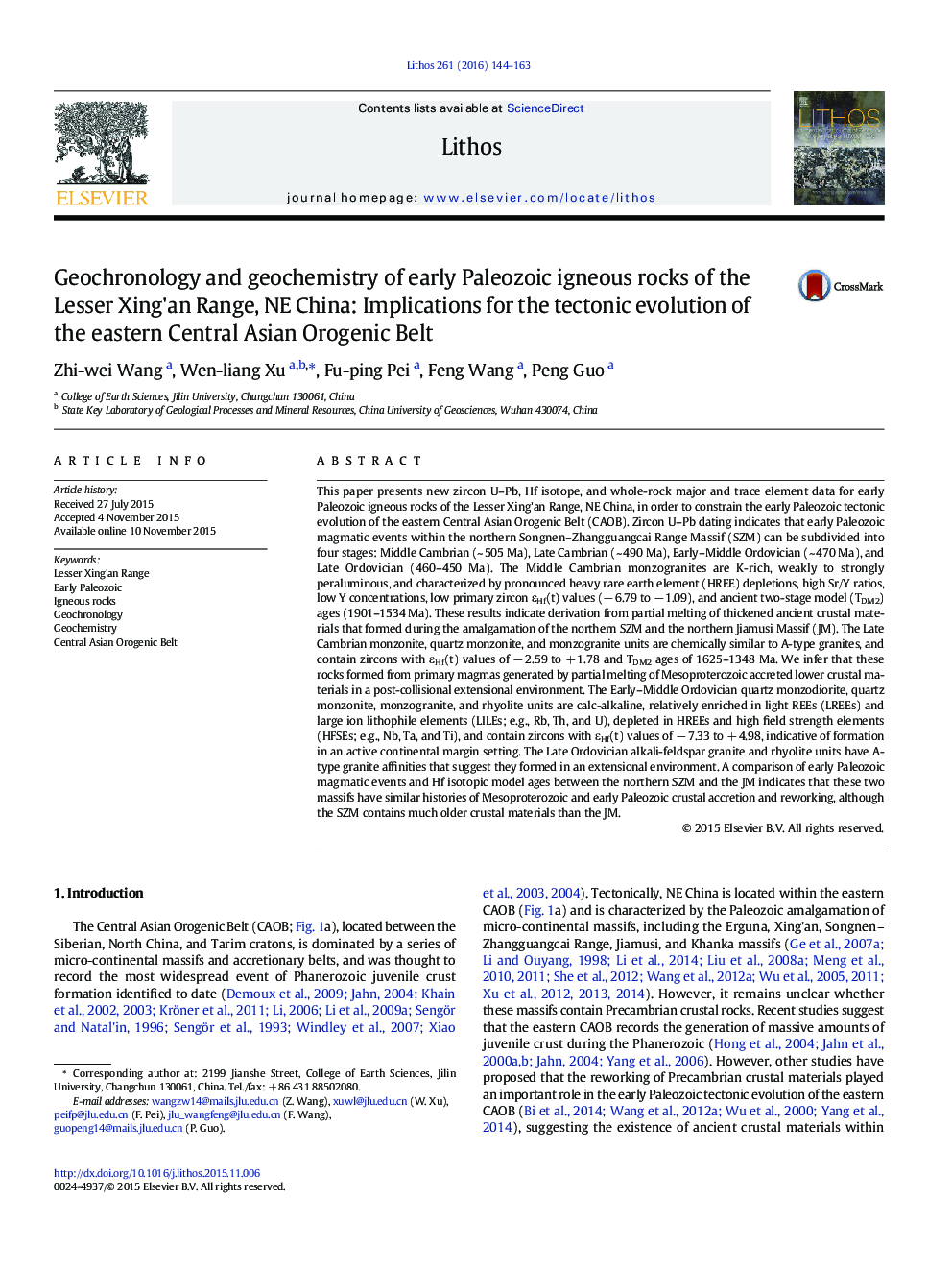| کد مقاله | کد نشریه | سال انتشار | مقاله انگلیسی | نسخه تمام متن |
|---|---|---|---|---|
| 4715552 | 1638643 | 2016 | 20 صفحه PDF | دانلود رایگان |

• Four stages of early Paleozoic magmatisms are recognized in the SZM.
• Middle Cambrian monzogranites record the latest collision between the SZM and JM.
• Late Cambrian A-type granitoids reveal a post-collision extensional setting.
• Ordovician calc-alkaline igneous rocks record a northwestward subduction.
• The SZM and JM have similar histories of Mesoproterozoic crustal accretion.
This paper presents new zircon U–Pb, Hf isotope, and whole-rock major and trace element data for early Paleozoic igneous rocks of the Lesser Xing'an Range, NE China, in order to constrain the early Paleozoic tectonic evolution of the eastern Central Asian Orogenic Belt (CAOB). Zircon U–Pb dating indicates that early Paleozoic magmatic events within the northern Songnen–Zhangguangcai Range Massif (SZM) can be subdivided into four stages: Middle Cambrian (~ 505 Ma), Late Cambrian (~ 490 Ma), Early–Middle Ordovician (~ 470 Ma), and Late Ordovician (460–450 Ma). The Middle Cambrian monzogranites are K-rich, weakly to strongly peraluminous, and characterized by pronounced heavy rare earth element (HREE) depletions, high Sr/Y ratios, low Y concentrations, low primary zircon εHf(t) values (− 6.79 to − 1.09), and ancient two-stage model (TDM2) ages (1901–1534 Ma). These results indicate derivation from partial melting of thickened ancient crustal materials that formed during the amalgamation of the northern SZM and the northern Jiamusi Massif (JM). The Late Cambrian monzonite, quartz monzonite, and monzogranite units are chemically similar to A-type granites, and contain zircons with εHf(t) values of − 2.59 to + 1.78 and TDM2 ages of 1625–1348 Ma. We infer that these rocks formed from primary magmas generated by partial melting of Mesoproterozoic accreted lower crustal materials in a post-collisional extensional environment. The Early–Middle Ordovician quartz monzodiorite, quartz monzonite, monzogranite, and rhyolite units are calc-alkaline, relatively enriched in light REEs (LREEs) and large ion lithophile elements (LILEs; e.g., Rb, Th, and U), depleted in HREEs and high field strength elements (HFSEs; e.g., Nb, Ta, and Ti), and contain zircons with εHf(t) values of − 7.33 to + 4.98, indicative of formation in an active continental margin setting. The Late Ordovician alkali-feldspar granite and rhyolite units have A-type granite affinities that suggest they formed in an extensional environment. A comparison of early Paleozoic magmatic events and Hf isotopic model ages between the northern SZM and the JM indicates that these two massifs have similar histories of Mesoproterozoic and early Paleozoic crustal accretion and reworking, although the SZM contains much older crustal materials than the JM.
Journal: Lithos - Volume 261, 15 September 2016, Pages 144–163